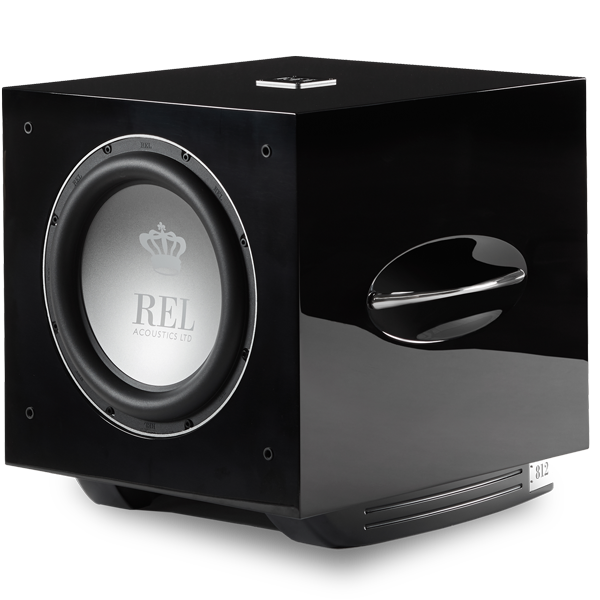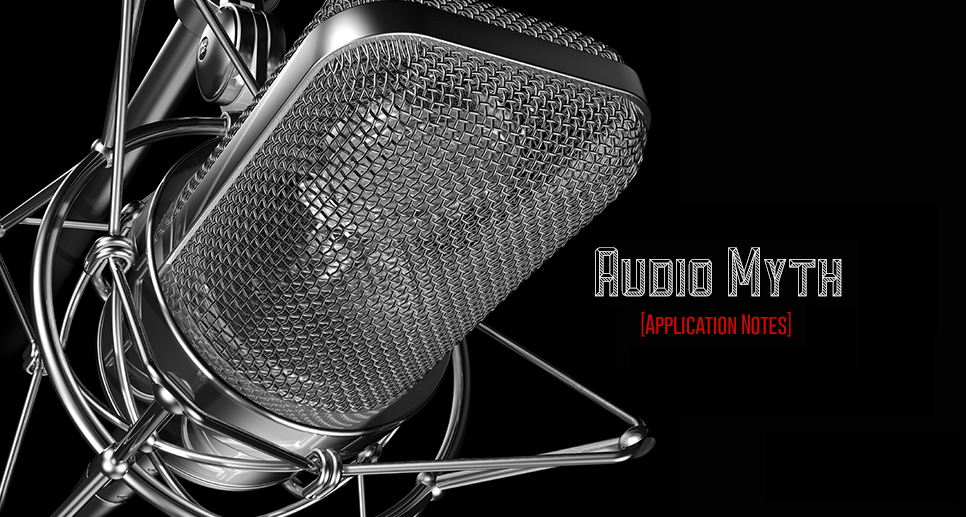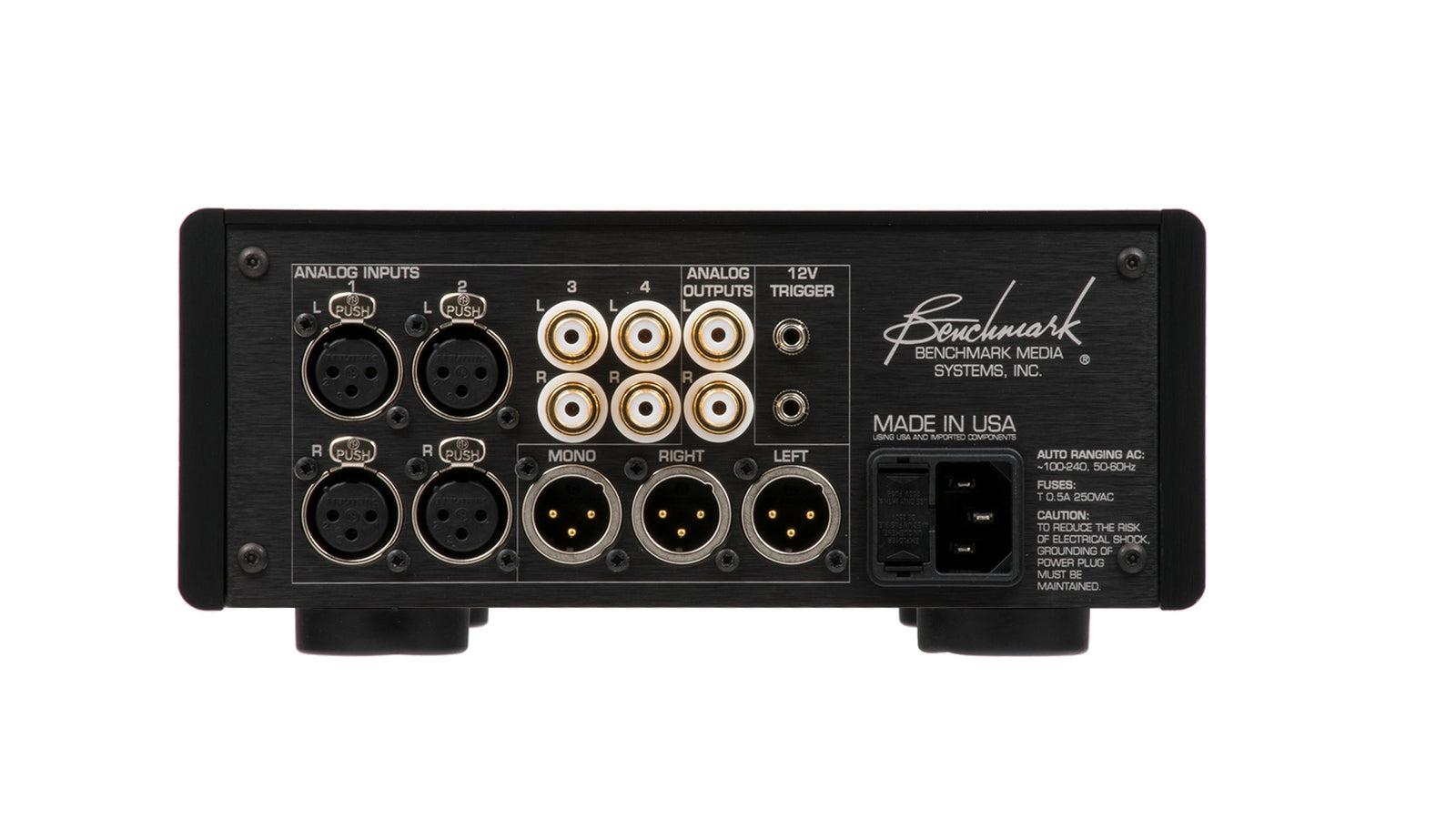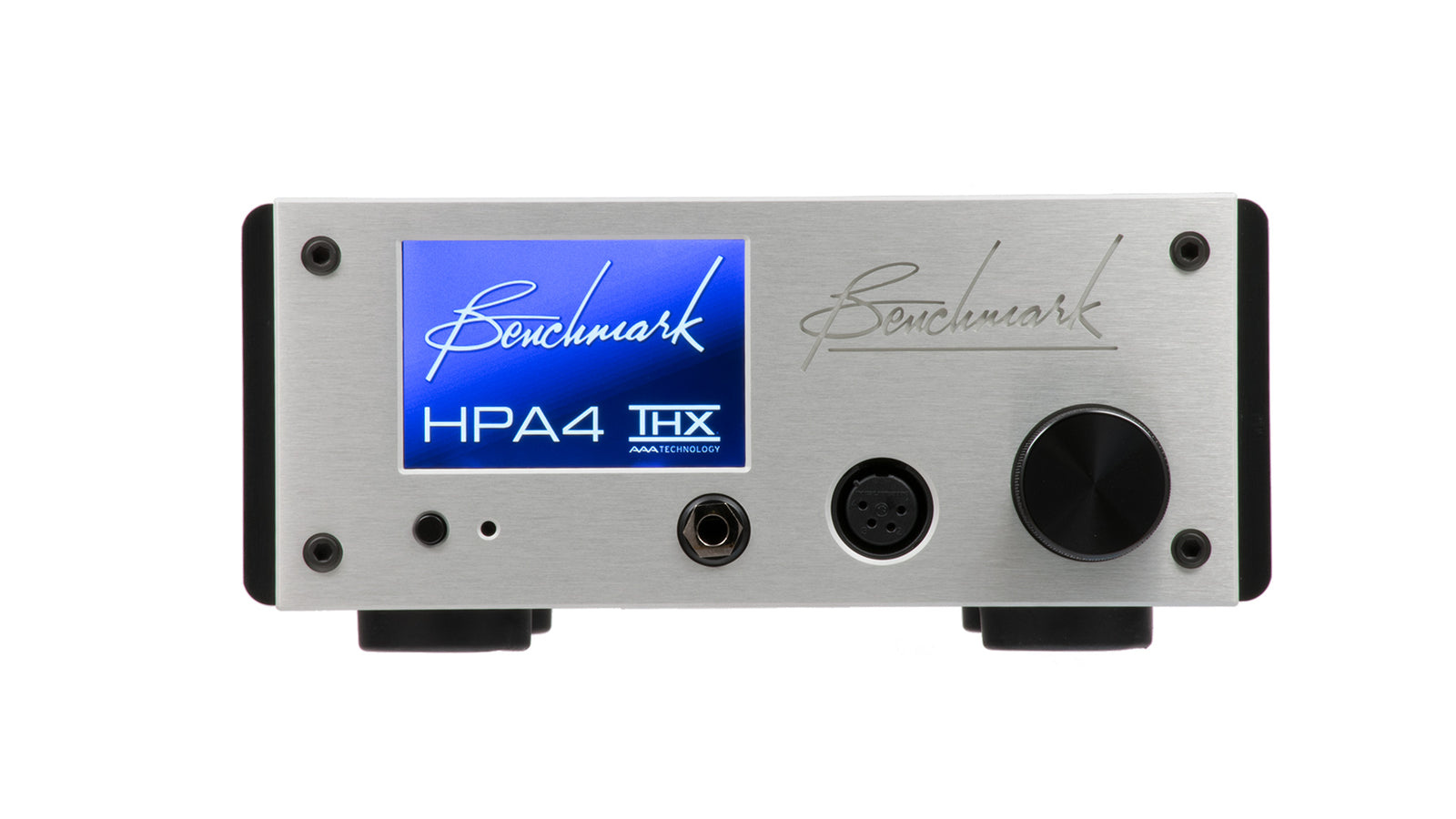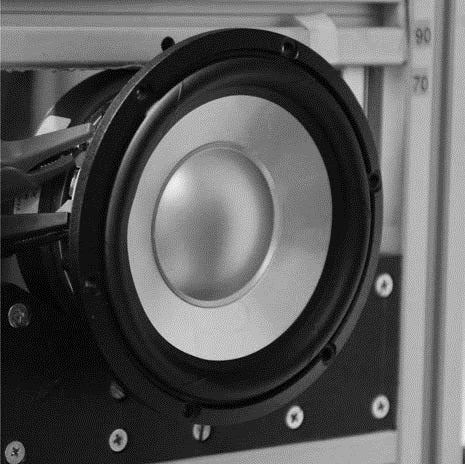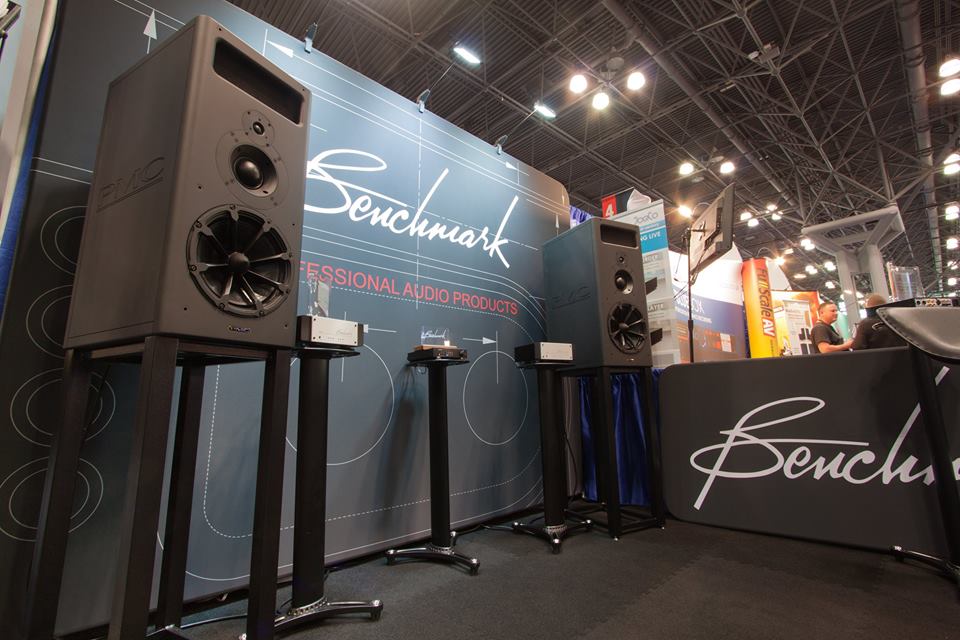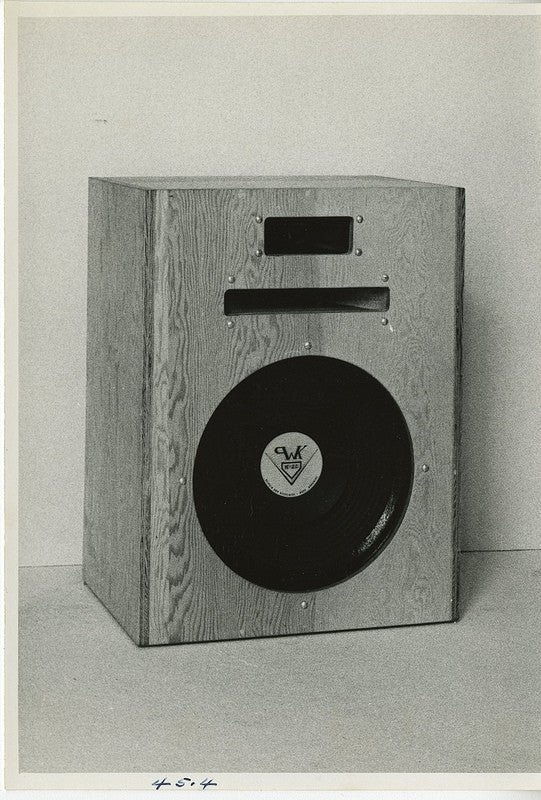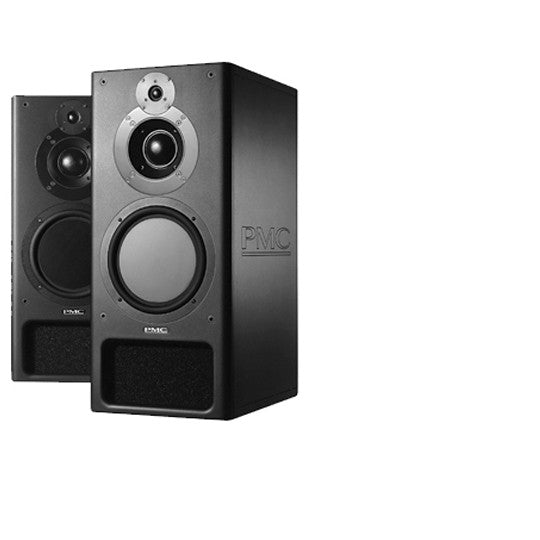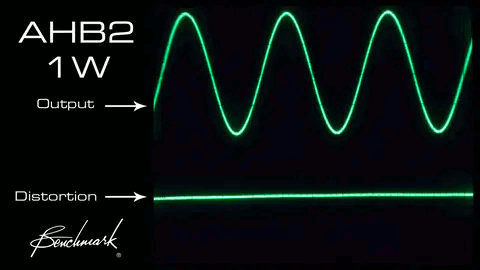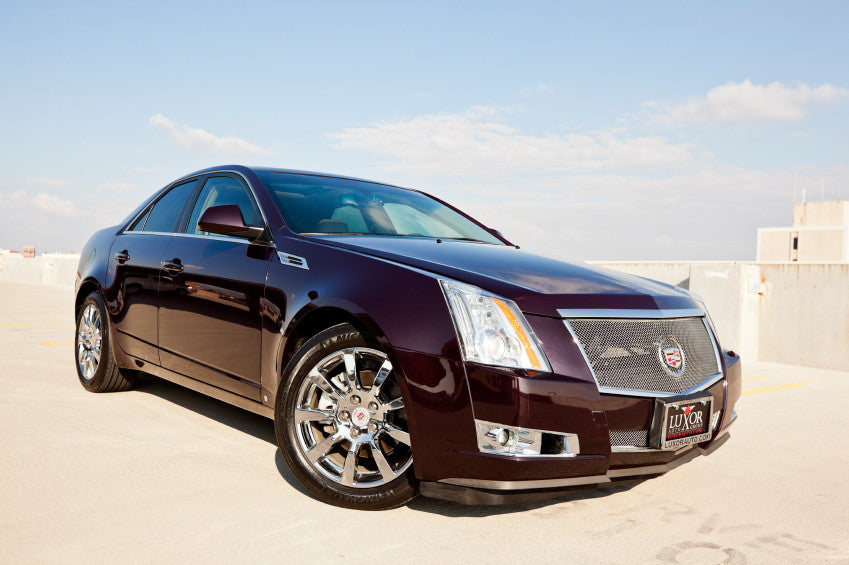Free shipping on USA orders over $700.
Audio Application Notes
REL Subwoofers with AHB2 Power Amplifier
by John Siau November 05, 2020
Audio Myth - "Damping Factor Isn't Much of a Factor"
by John Siau June 04, 2020
Myth - "Damping Factor Isn't Much of a Factor"
Myth - "A Damping Factor of 10 is High Enough"
Myth - "All Amplifiers Have a High-Enough Damping Factor"
Where did these Myths Originate?
These myths seem to trace back to a well-know paper written by Dick Pierce. His analysis shows that a damping factor of 10 is virtually indistinguishable from a damping factor of 10,000 when it comes to damping the motion of a loudspeaker cone. This analysis has been examined and repeated in many more recent articles, such as a well-written post on Audiofrog.com by Andy Wehmeyer. Articles such as these are often cited as evidence that amplifier damping factor doesn't matter. The mathematical analyses are correct, but the conclusions are incomplete and misleading!
Feed-Forward Error Correction
by John Siau October 11, 2018
The Benchmark AHB2 power amplifier and HPA4 headphone amplifier both feature feed-forward error correction. This correction system is an important subset of the patented THX-AAA™ (Achromatic Audio Amplifier) technology. It is one of the systems that keeps these Benchmark amplifiers virtually distortion free when driving heavy loads. It is also the reason that these amplifiers can support 500 kHz bandwidths without risk of instability when driving reactive loads.
This paper explains the differences between feedback and feed-forward systems. As you read this paper, you will discover that you already understand the benefits of feed-forward correction because you use it instinctively to improve a feedback system commonly found in your automobile. If feed-forward correction can improve your driving experience, it may also improve your listening experience!
- John Siau
Balanced vs. Unbalanced Analog Interfaces
by John Siau April 23, 2018
If you look at the back of any Benchmark product, you will find balanced XLR analog-audio connectors. As a convenience, we also provide unbalanced RCA connectors on many of our products. In all cases, the balanced interfaces will provide better performance.
We build our unbalanced interfaces to the same high standards as our balanced interfaces, but the laws of physics dictate that the balanced interfaces will provide better noise performance.
This application note explains the advantages of balanced interfaces.
- John Siau
Relay-Controlled Volume - The Ultimate Solution for Analog Audio
by John Siau April 11, 2018
Benchmark has introduced a new analog-to-analog volume control circuit that features a 256-step relay-controlled attenuator and a 16-step relay-controlled boost amplifier. The volume control has a +15 dB to -122 dB range in 0.5 dB steps and is a key component in the HPA4 Headphone / Line Amplifier.
Our goal was to produce an analog-to-analog volume control with the highest achievable transparency. We wanted to be able to place this volume control in front of our AHB2 power amplifier or in front of our THX-888 headphone amplifier board without diminishing the performance of either device. Our volume control would need to have lower distortion and lower noise than either of these amplifiers. Given the extraordinary performance of these THX-AAA amplifiers, this would not be an easy task!
This application note discusses the engineering decisions that went into the development of this new analog volume control circuit. The end result is a fully buffered volume control with a signal-to-noise ratio that exceeds 135 dB. THD measures better than the -125 dB (0.00006%) limits of our test equipment.
- John Siau
Laboratory Use of the Benchmark AHB2 Power Amplifier
by John Siau January 26, 2018
SEAS, a well-known manufacturer of high-quality loudspeakers, selected the Benchmark AHB2 as a key component for use in testing loudspeakers. They created an innovative test system that measures loudspeaker motor strength and moving mass with higher accuracy than previous methods. This new measurement system was documented in the December 2017 Journal of the Audio Engineering Society.
According to the AES paper, the SEAS team selected the Benchmark AHB2 for the following reasons:
"A Benchmark AHB2 amplifier is used, which has excellent signal-to-noise ratio and bandwidth, low output impedance, and is suitable for laboratory use (with advanced overload protection)."
The AHB2 was designed to outperform all competing power amplifiers in terms of noise and distortion. The result is an amplifier with unrivaled transparency.
Our goal was to create the ultimate amplifier for the enjoyment of music. It is nice to know that the AHB2 is also being used to test new and improved loudspeakers!
- John Siau
Interpreting THD Measurements - Think dB not Percent!
by John Siau November 15, 2017
Distortion measurements (THD, THD+N and IMD) are traditionally expressed in terms of percent. But what do 1%, 0.1%, 0.01% or 0.001% mean in terms of loudness or audibility?
If you are like most people you just know that 0.001% is the best of the three numbers listed above. If you are a well-trained geek you will recognize that each added leading zero represents a 20 dB improvement. 0.01% is 20 dB lower than 0.1% and 40 dB lower than 1%. The well-trained geek will convert % to dB in order to give meaning to these numbers.
When THD is expressed in terms of dB, we can easily determine how loud the distortion will be in our playback system.
Will my audio electronics produce audible distortion?
Will the distortion produced by my audio electronics be inaudible?
- John Siau
Calculating the Performance of an Amplifier-Speaker Combination - Example 2
by John Siau October 27, 2017
Example 2 - PMC MB2S
In this application note we calculate the maximum output level and noise level produced by an amplifier/loudspeaker combination.
This application note can serve as an example for calculating the maximum sound pressure levels and noise output levels for any amplifier/speaker combination.
At the 143rd AES conference in NYC, we demonstrated two Benchmark AHB2 monoblock power amplifiers driving a pair of 4-Ohm PMC MB2S studio monitors.
We were extremely impressed by the unusually clean, distortion-free, output of these monitors. They fully compliment the distortion-free performance of the AHB2 to provide a system with outstanding clarity while delivering high sound pressure levels.
In this application note we will calculate the peak SPL produced by this system. We will also calculate the acoustic noise at a distance of 1 meter from each monitor. We will also discuss some of the unique design features of the MB2S monitors that contribute to their impressive performance.
- John Siau
AHB2 Tri-Amp Setup - Ellery Coffman
by Benchmark Media Systems July 27, 2017
The following photos and system descriptions were provided to us by one of our customers, Ellery Coffman. He has put together an amazing system and has carefully treated his room with acoustic absorbers. Nicely done!
Hi Rory,
Thanks again for your help. For two speakers, it is truly unbelievable how real this tri-amp system sounds; it is nothing short of jaw dropping! It truly sounds better than the $200k+ setups I've heard in some of the high-end audio shops I've been to.
Post updated 10/8/2020
Speaker Sensitivity and Amplifier Power
by John Siau April 27, 2017
Speaker sensitivity is a measure of how loud a speaker will play at a given input power or at a given input voltage. Sensitivity is normally measured with a 1 watt power input or a 2.83 Vrms voltage input.
There have been many different speaker designs over the years and there are vast differences in speaker sensitivity. The speakers below have sensitivities ranging from about 85 dB to 109 dB.
- What are the power requirements?
- What are the implications for system noise?
- How loud will each play?
- Do they require different amplifiers?
- John Siau
Calculating the Performance of an Amplifier-Speaker Combination
by John Siau November 01, 2016
Example 1 - PMC IB2S
In this application note we calculate the maximum output level and noise level produced by an amplifier/loudspeaker combination. Use this example for calculating the performance of your system.
At the 141st AES conference we demonstrated two Benchmark AHB2 monoblock power amplifiers driving a pair of 4-Ohm PMC IB2S studio monitors. These monitor are also available the PMC IB2SE hi-fi version.
In bridged mono, the AHB2 can deliver over 518 watts into each of these 4-Ohm speakers. This is a perfect match to PMC's 500 watt recommendation. The AHB2 easily provides the power, the output current, and the damping required by these low-impedance speakers.
"I am very impressed with the clarity and accuracy of these outstanding professional monitors. The Benchmark AHB2 and PMC IB2S are an absolutely killer combination!"
- John Siau, VP, Benchmark Media Systems, Inc.
Power Amplifiers - A "First Watt" ABX Test
by John Siau September 27, 2016
In Benchmark's listening room we recently demonstrated the importance of the first watt using two 100 watt stereo power amplifiers. One amplifier was a traditional class-AB amplifier, the other was Benchmark's AHB2 power amplifier with feed-forward error correction. Using a double-blind ABX test, we verified that there was a clearly audible difference when the amplifiers drove speakers at an output level of 0.01 watt.
- John Siau
Audio Myth - "Switching Power Supplies are Noisy"
by John Siau May 03, 2016
This Myth Goes Something Like This:
"Switching supplies are noisy."
"Linear power supplies are best for audio."
We disagree!
About 5 years ago, Benchmark stopped putting linear power supplies into our new products, and we replaced them with switching power supplies. We did this because linear supplies are too noisy. Yes, you read that correctly, linear supplies are noisy!
A well-designed switching power supply can be much quieter than a linear supply!
Find out why!
- John Siau
Benchmark Bi-Directional 12 Volt Trigger - Technical Details
by John Siau April 20, 2016
12 Volt Trigger
Link your audio products together with trigger cables


Benchmark has created a bi-directional 12 Volt trigger interface that is compatible with almost every trigger input and output. This interface can be used to connect Benchmark products together so that they will power up and down in a sequenced fashion. This same interface can be connected to the trigger inputs and outputs on other brands of audio products. This application note describes some typical configurations and it includes the full technical details of the Benchmark bi-directional trigger system.
- John Siau
History of the AHB2 Power Amplifier
by John Siau March 18, 2016
The DA101 - Inspiration for the AHB2
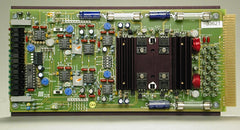
For many years, we used our distribution amplifiers to drive the speakers in our listening room. We couldn't buy an amplifier that came close to the performance of our distribution amplifiers, and Allen had often talked about building a bigger amplifier that could match the performance of the DA101.
In 2011 we began to talk about making Allen's dream for a power amp a reality. The goal was to meet or exceed the performance of Allen's DA101, while scaling up the power by a factor of 10.
- John Siau
The A.H.B. Story
by John Siau March 17, 2016
A.H.B.
The AHB2 power amplifier is named in honor of Benchmark's founder, Allen H. Burdick. Allen had a life-long passion for audio, and became one of the leading innovators in the pro-audio industry. Allen was a perfectionist and a prolific engineer. Most early Benchmark schematics bear the initials A.H.B.
Allen's DA101 distribution amplifier helped define the performance goals of the AHB2 power amplifier. The result is an amplifier that Allen would have been proud to call a "Benchmark".
In loving memory of Allen H. Burdick (June 29, 1942 - September 27, 2013).
- John Siau
Crossover Distortion - Video Clip
by John Siau March 14, 2016
The AHB2 - A new and radically different audio power amplifier! Dick Olsher once said that "the first Watt is the most important Watt".
This short 8-second video clip demonstrates some of the differences.
- John Siau
AHB2 Crossover Distortion Measurements
by John Siau March 10, 2016
Crossover Distortion - Measurements
The following measurements and scope photos demonstrate the effectiveness of the feedforward system in the AHB2.
From the first Watt to the last Watt, the AHB2 shows no evidence of crossover distortion. In contrast, all conventional class-AB amplifiers have crossover-distortion artifacts.
Dick Olsher once said that "the first Watt is the most important Watt". I agree!
- John Siau
Amplifier Crossover Distortion
by John Siau March 10, 2016
Crossover Distortion - Introduction
Most audio power amplifiers suffer from a defect known as "crossover distortion". This distortion is particularly troublesome at low output levels. At low power levels, the crossover distortion can rise to a high percentage of the output level and become the dominant source of distortion.
- John Siau
How Should I Buy an Audio System?
by John Siau February 26, 2016
Two Distinct Types of Audio Products - Understand the Difference Before You Buy!

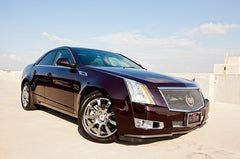
Make your own choice!
"Buying an audio product is much like buying a car"
There are two distinct types of audio products. Some audio products are designed to be transparent while others are designed to provide a euphonic experience. These types are as different as a Porsche and a Cadillac.
There is not a right and wrong type of car. Likewise there is not a right and wrong type of audio product. The choice belongs to the user, but the user must be fully aware of the differences before they buy.
- John Siau


